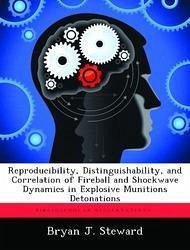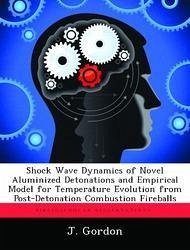Nicht lieferbar

Reproducibility, Distinguishability, and Correlation of Fireball and Shockwave Dynamics in Explosive Munitions Detonations
Versandkostenfrei!
Nicht lieferbar
The classification of battlespace detonations, specifically the determination of munitions type and size using temporal and spectral features of infrared emissions, is a particularly challenging problem. The intense infrared radiation produced by the detonation of high explosives is largely unstudied. Furthermore, the time-varying fireball imagery and spectra are driven by many factors including the type, size and age of the chemical explosive, method of detonation, interaction with the environment, and the casing used to enclose the explosive. To distinguish between conventional military muni...
The classification of battlespace detonations, specifically the determination of munitions type and size using temporal and spectral features of infrared emissions, is a particularly challenging problem. The intense infrared radiation produced by the detonation of high explosives is largely unstudied. Furthermore, the time-varying fireball imagery and spectra are driven by many factors including the type, size and age of the chemical explosive, method of detonation, interaction with the environment, and the casing used to enclose the explosive. To distinguish between conventional military munitions and improvised or enhanced explosives, the current study investigates fireball expansion dynamics using high speed, multi-band imagery. Instruments were deployed to three field tests involving improvised explosives in howitzer shells, simulated surface-to-air missiles, and small caliber muzzle flashes. The rate of shockwave expansion for the improvised explosives was determined from apparent index of refraction variations in the visible imagery. Fits of the data to existing drag and explosive models found in the literature, as well as modifications to these models, showed agreement in the near- and mid-fields (correlation coefficient, r2 gt; 0.985 for t lt; 50 msec); the modified models typically predicted the time for the shockwave to arrive a kilometer away to better than 10%; and fit parameters typically had an uncertainty of less than 20%.






